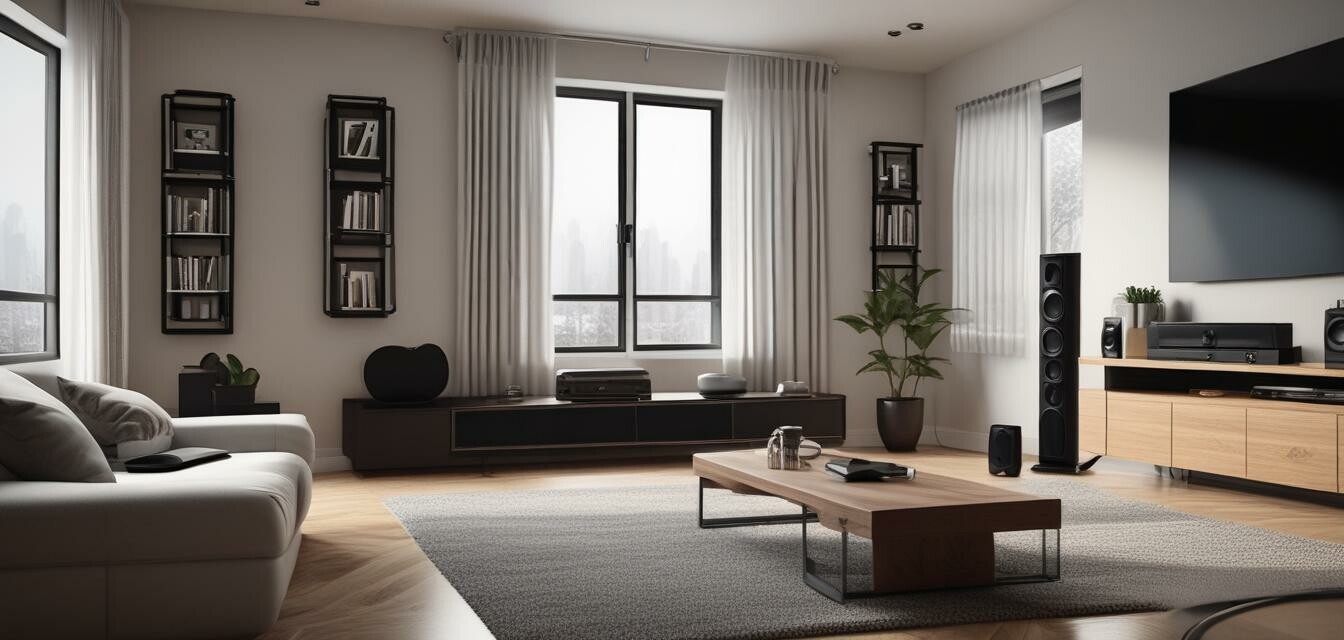
How to Select the Right Sound System for Your Space
Choosing the right sound system can significantly enhance your listening experience, turning your home into a personal concert hall or a cinema. This guide will help you consider crucial factors such as room size, layout, and personal preferences to ensure you select a sound system that fits perfectly in your space.
Key Takeaways
- Evaluate room size and layout for optimal sound placement.
- Consider your listening habits and preferences.
- Determine the right type of sound system for your needs (e.g., stereo, surround sound).
- Budget for quality components that match your space.
- Research and compare options before making a final decision.
Understanding Your Space
The first step to selecting the right sound system is to evaluate your space. Factors such as room size, shape, and layout will significantly influence the sound quality and system type suitable for you.
Room size and dimensions
Different systems perform differently in varying room sizes. Here’s a simple table to help you understand which systems work best in different environments:
| Room Size | Recommended Sound System | Notes |
|---|---|---|
| Small (up to 150 sq ft) | Bookshelf Speakers / Soundbar | Space-efficient and typically provides good sound quality. |
| Medium (150 - 300 sq ft) | 2.1 Speaker Systems / Compact Home Theater | Balanced sound output with room-filling capabilities. |
| Large (over 300 sq ft) | 5.1 or 7.1 Surround Sound Systems | Ideal for immersive experiences, great for movie nights. |
Room layout considerations
How you arrange your furniture and the overall shape of your room affect sound clarity and quality. Here are a few tips:
- Position listening seats at an equal distance from speakers.
- Avoid placing speakers too close to walls or corners.
- Consider ceiling height for optimal sound dispersion.
Your Listening Habits
Understanding how you typically use your sound system is essential in making the right choice. Are you a movie buff, a music lover, or perhaps you enjoy gaming? Each use case will lead to different requirements.
Different systems for different uses
If you're primarily focused on:
- Movies: A surround sound system enhances the cinematic experience.
- Music: High-quality speakers or a good soundbar will provide excellent sound clarity.
- Gaming: Consider a system with quick response times and immersive sound.
Types of Sound Systems
Now that you have an understanding of your space and habits, let's look at the types of sound systems available:
| Sound System Type | Best For | Pros | Cons |
|---|---|---|---|
| Stereo System | Music enthusiasts | Simple setup, great sound quality | No surround sound |
| Home Theater System | Movie watchers | Immersive experience | Complex setup, requires more space |
| Soundbars | Compact spaces | Space-saving, easy installation | May lack depth in sound |
| Portable Speakers | Outdoor use | Mobility, versatile | Limited sound quality |
Setting Your Budget
An essential aspect of sound system selection is your budget. Here are a few considerations to keep in mind:
- Invest in quality components that offer durability.
- Look for bundled deals to save costs.
- Don’t forget accessories such as cables and mounts.
Research and Comparison
Before making a purchase, research various sound systems that fit your criteria and budget. Consider visiting our page on buying guides for comprehensive tips on sound system selection.
Product Reviews and Ratings
Reading reviews can provide insights into performance and customer satisfaction. Check out our audio gadgets category for detailed product information and customer feedback.
Conclusion
Choosing the right sound system involves evaluating your space, understanding your listening habits, and being mindful of your budget. By considering these factors, you are well on your way to creating an enjoyable audio experience tailored to your needs.
Pros
- Enhanced overall audio experience
- Tailored systems for different uses
- Wide variety of options to fit any space
Cons
- Initial investment can be high
- Complex setups might require professional help
- Space limitations for larger systems
Tips for Beginners
- Start simple with a soundbar if unsure.
- Test sound systems in-store, if possible.
- Always check compatibility with your existing devices.
